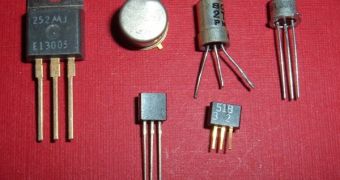Since modern transistors appeared, they were hailed as one of the greatest inventions of our times. As their sizes got smaller, and more could be fit on a silicon chip, the power exhibited by computers increased considerably. But experts warned that, at one point, the miniaturization would reach a limit, under which the quantum effects of nanoscale particle interactions would hinder the operation of transistors. This is happening right now, and British researchers want to learn how to overcome the obstacle by employing the help of a grid containing thousands of computers, the BBC News reports.
The vast network's main goal is to promote innovation, and to usher in a new era in computer chips and silicon-based microprocessors. Experts now want to produce transistors that are less than 30 nanometers in size, which is tremendously difficult to achieve. Hundreds of thousands of the tiny structures have already been simulated using the grid, which consumed about 20 years’ worth of processing time. After analyzing these results, scientists will hopefully be able to get past the physical constraints that have prevented them from achieving the 30-nm technology until now.
“What we do in these simulations is try to predict the behavior of these devices in the presence of atomic scale effects,” University of Glasgow Professor Asen Asenov explains. He is the head of the device-modeling group that operates the NanoCMOS simulation project. The expert adds that many manufacturers today are building their chips on the 32-nm technology, but that most of them wish to move to the 22-nm standard soon.
“These problems started to appear a couple of generations ago, but right now it's one of the most serious problems. What's happening at such dimensions is that the atomic structure of the transistor cannot be precisely controlled. In order to make them work we have to put in impurities to define different regions,” Asenov says. What the group is trying to determine is the best way in which transistors could be built so that their structure is as clearly defined as possible. The goal is to get the small, on/off switches to perform consistently when electricity is passed through them.

 14 DAY TRIAL //
14 DAY TRIAL //